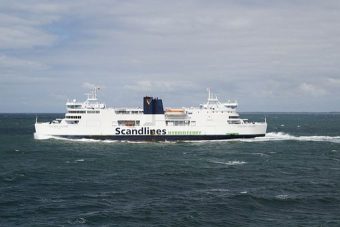
Travelling by water has the same negative impact on the environment as moving freight by truck — a plume of deadly diesel emissions following behind. In Scandinavia, ferries are an important part of the transportation system both internally and across international borders and most of those ferries are powered by diesel engines. But hybrid ferries are beginning to appear along ferry routes in the region.
Just like a hybrid automobile, these new ferries store electricity in an onboard battery and use it to power electric motors to propel them forward part of the time. Corvus Energy has just announced that it has been awarded a 10-year contract to provide long term service and maintenance functions aboard all of the Scandlines hybrid ferry fleet.
Scandlines was the first ferry operator to build and operate large ROPAX (roll-on/off passenger) hybrid ferries that combine traditional diesel engines with advanced battery power. Scandlines uses Corvus lithium ion batteries exclusively. Corvus Energy provides purpose built battery systems for a variety of hybrid and fully electric heavy industrial equipment, including large marine propulsion drives.
“Scandlines is very pleased to continue and expand our long partnership with Corvus Energy. Beginning with Corvus in 2012, their industry leading energy storage technology has become the standard electric battery power solution for all of our hybrid vessels,” said Fini Hansen, Technical Superintendent of Fleet Management at Scandlines.
On February 5th of this year, Scandlines put itd two newest Corvus-powered hybrid ferries, the M/V Berlin and M/V Copenhagen, into regular service on its Rostock-Gedser route between Denmark and Germany. Along with the decreased environmental impact, the fuel consumption of the vessels has been reduced significantly compared to the previous ferries used on the same route.
Another ferry line, Norway’s ColorLine, is building the largest hybrid electric ferry in the world. The 525-foot long Color Hybrid will carry 2,000 passengers and 500 cars and will operate between Sandefjord and Stromstad. It is expected to use only electric power in Sanderfjord itself and near the docks at either end of the route. It will be ready for commercial service in 2019.
Source: cleantechnica.com


